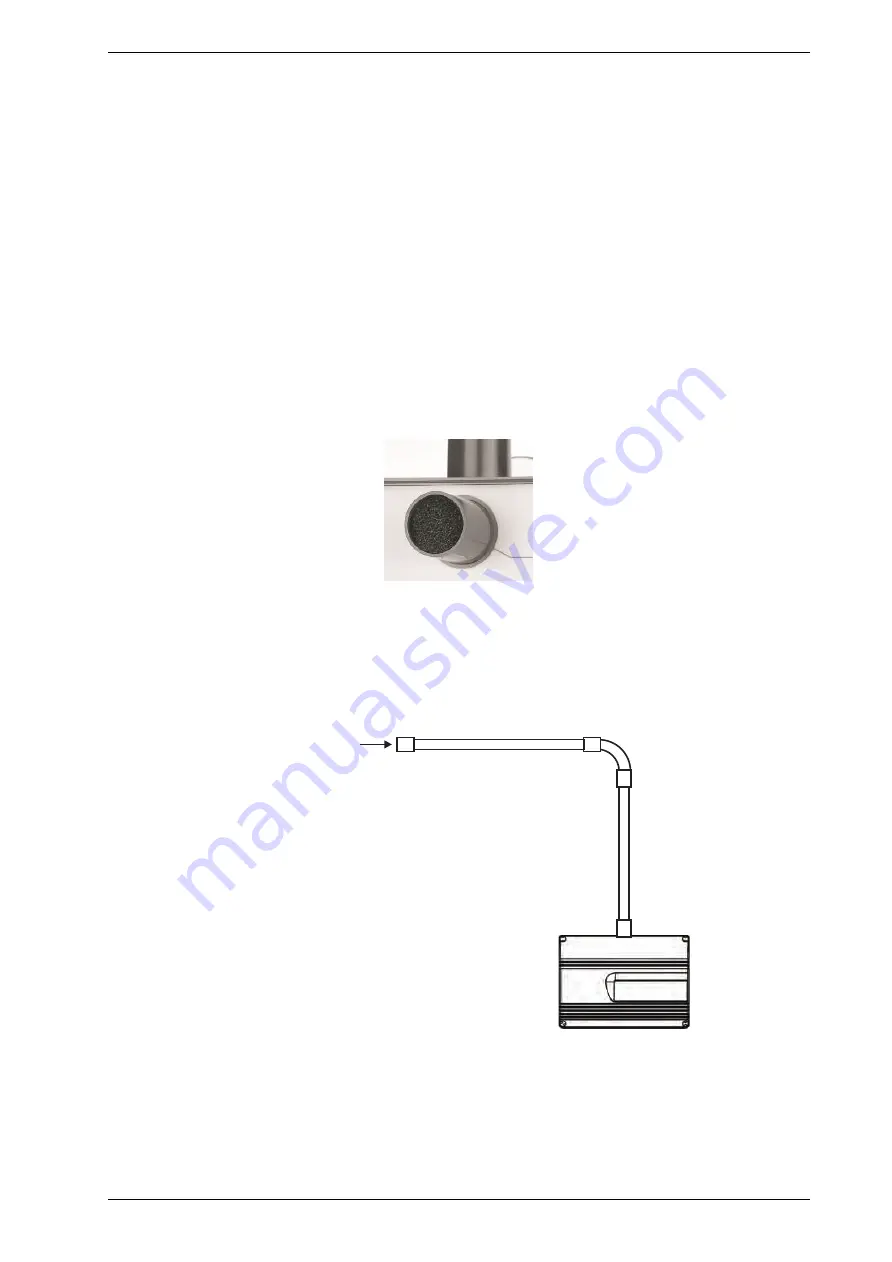
Discovery ASD-1 Product Guide
Apollo Fire Detectors
12
www.apollo-fire.co.uk
4.5
Exhaust
Where the Discovery ASD-1 is located outside the protected area, consideration must be given to returning
the exhaust air to the protected environment to balance pressure differences that may exist between the two
areas. In the majority of applications, this is not necessary as pressure differences are minimal.
Examples of where the exhaust should be returned to the protected area include:
l
where pressure differences exceed 50 Pa from where the detector is located outside the protected area.
l
where there are hazardous substances inside the protected area, for example hospital operating theatres,
laboratories.
Pipe of the same specification as the sampling pipe runs should be used and its length limited to a maximum
of 10 m (30 ft) to avoid significant reduction in the airflow. Care should be taken to position the new exhaust
outlet where it cannot be accidentally or deliberately blocked.
Return air pipes need to be as short as possible to minimize the effect of airflow resistance in the return air
pipe network.
4.6
Filters
Figure 4-3: Filter at inlet of system
The sampled air is passed through a filter (order code 29600-946APO) before entering the detector chamber.
4.7
Standard Configurations
4.7.1
Configuration with Single Pipe
End Cap with
single 8mm hole
Figure 4-4: Example of the Discovery ASD-1 system with one pipe
Note:
Please see the table in Chapter 8 for EN54-20 hole and pipe length limits for certified detectors.
Summary of Contents for 29650-081
Page 2: ......





























